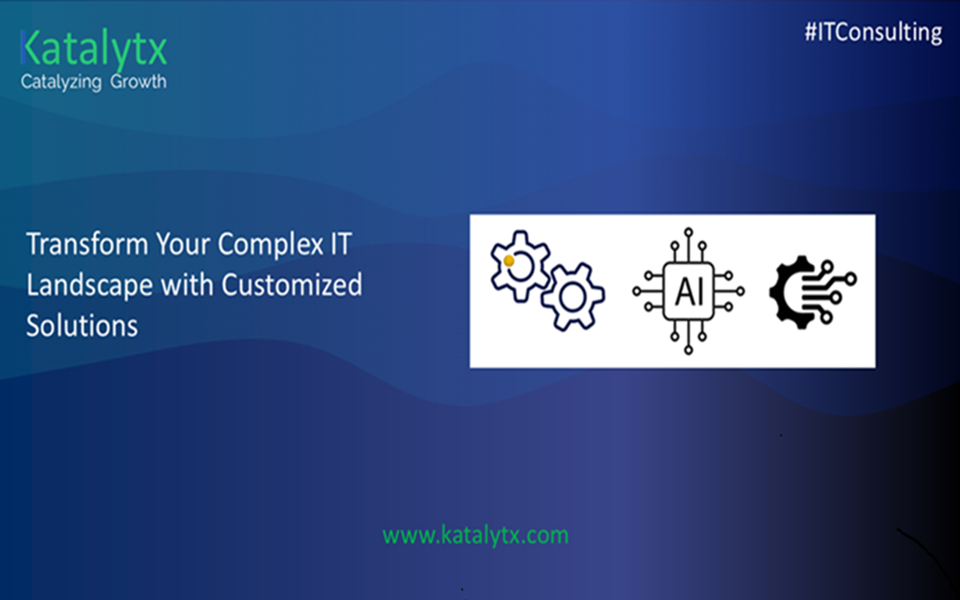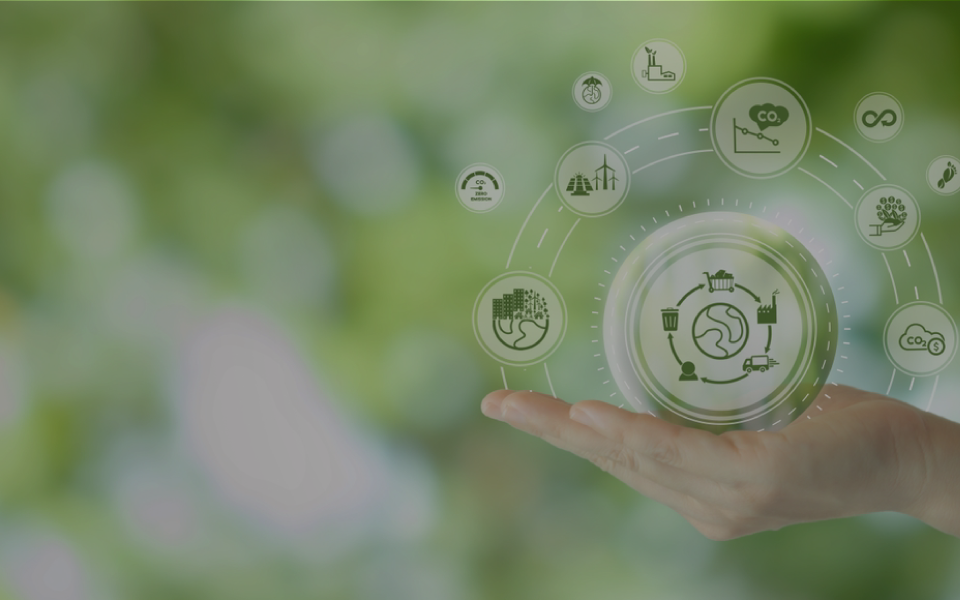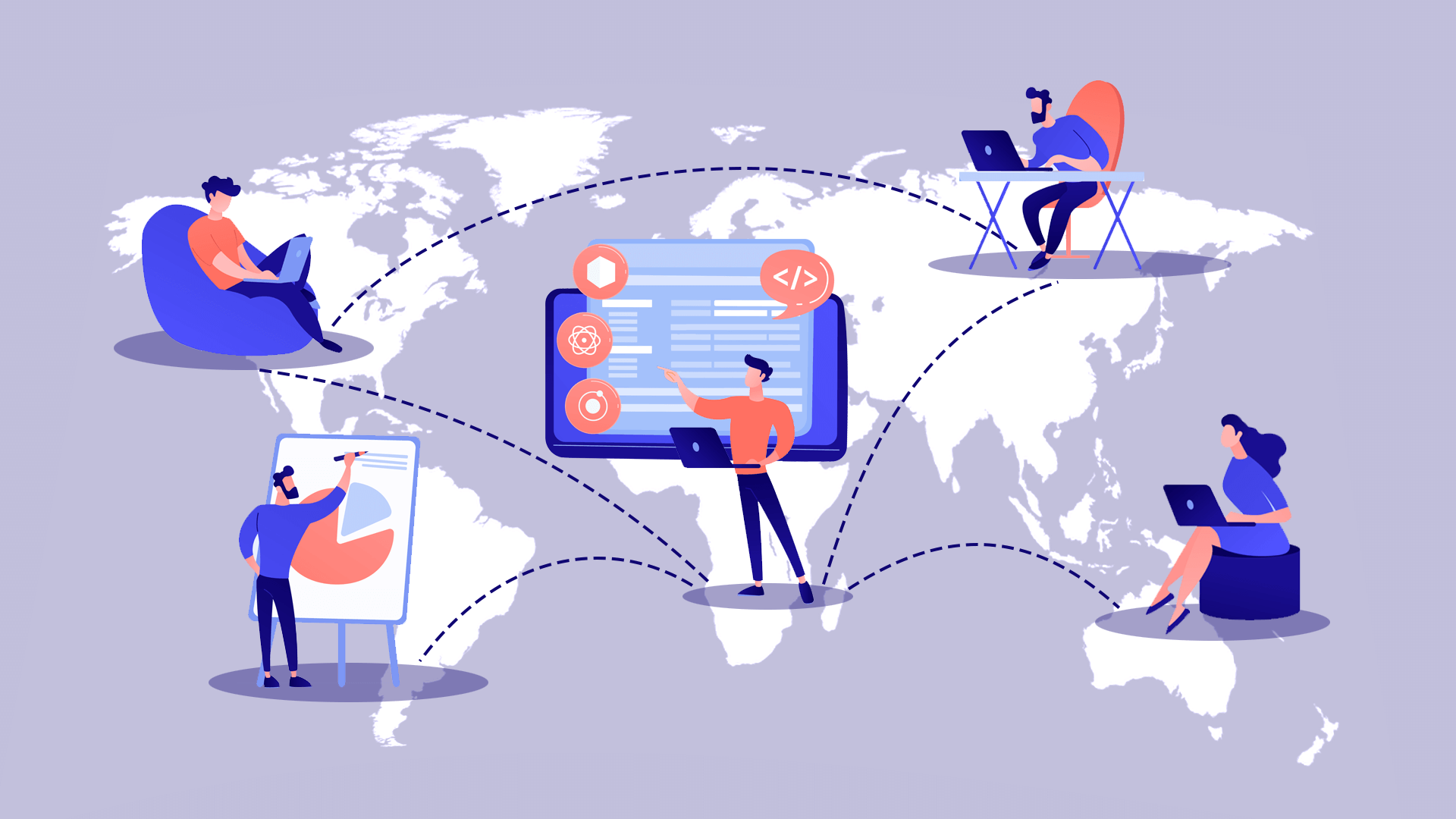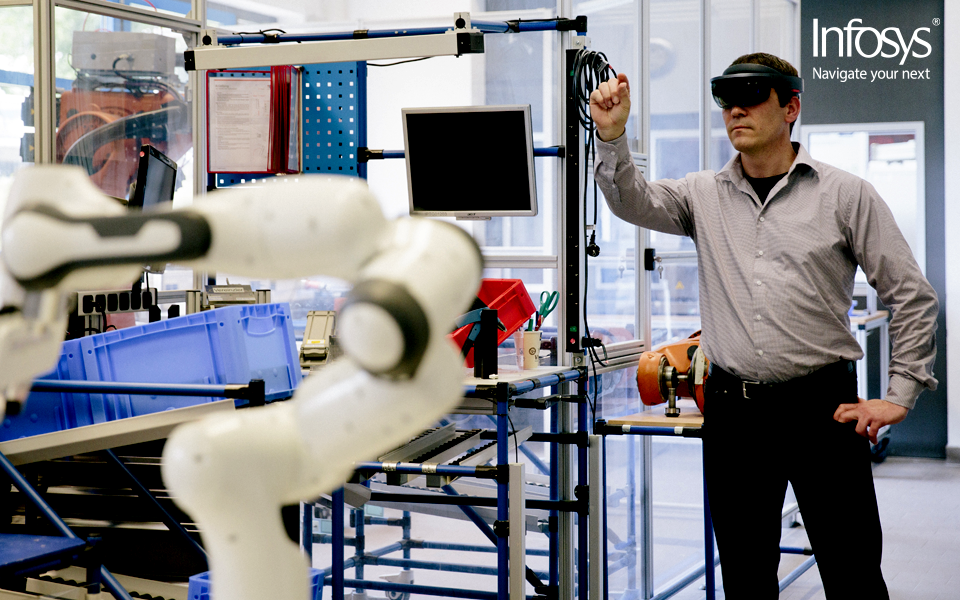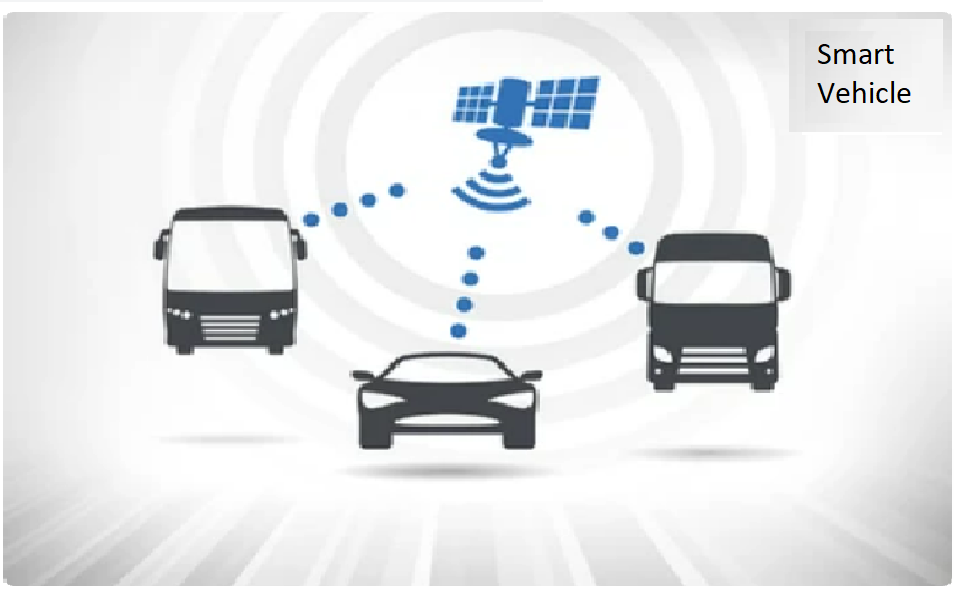CIOs in the sustainability spotlight
The corporate imperative to reduce greenhouse gas (GHG) emissions and mitigate other environmental impacts often focuses on the most obvious areas: fleet vehicles, manufacturing plants, and building operations. Corporate IT departments have often hovered on the outskirts of these efforts — affected by new initiatives but not required to make difficult concessions. Now, ambitious organizations are adopting a comprehensive approach to sustainability, demanding results in areas that had not traditionally been priorities.
Information and communications technology (ICT) accounts for 2% to 4% of the world’s greenhouse gas emissions. This is at least as much as what’s produced by global air travel. In addition, the staggering amount of electronic waste has brought further scrutiny to IT departments. Researchers calculated that the world disposed of 57.4 million tons of e-waste in 2021, an amount that weighed as much as the Great Wall of China.
The impact of software, services, and end-user devices is already massive, and projected to increase in step with the growth of connected devices, artificial intelligence (AI) use cases, metaverse initiatives, and other advanced technologies. Green IT has not been at the forefront of corporate sustainability efforts — so far. Now, chief information officers (CIOs) are expected to contribute significantly to their business’s carbon neutrality and net-zero goals and will be held accountable alongside other corporate leaders.
The back office is no longer in the background of sustainability initiatives.
Evolving use of green IT
Green IT is not a new concept, just one that is continuously evolving. Observers have warned about IT’s environmental impact since the World Wide Web advanced from a niche communications network to a force reshaping the world.
Earlier versions of green IT focused on reducing electricity consumption through power management programs, installing more energy efficient on-premise data center hardware, transitioning from analog cathode-ray tube monitors to digital LCD (and then LED) screens, and adopting virtualization to make more efficient use of computing power.
Later, companies mainly focused on additional data center advances, such as server consolidation, better cooling techniques, and a switch to renewable energy sources. Cloud computing also emerged as an alternative that could better utilize resources and reduce the carbon intensity of a company’s IT system.
The most recent advances allow companies to lower their energy use and emissions proportional to the exponential growth in their data collection, transfer, and analysis. Data center energy usage has increased 10% since 2010, while data center workloads grew more than 900%, according to the International Energy Agency.
Even so, the calculations will be different going forward, as a variety of power-hungry technologies arrive simultaneously.
Figure 1. Green IT seeks to solve five problems
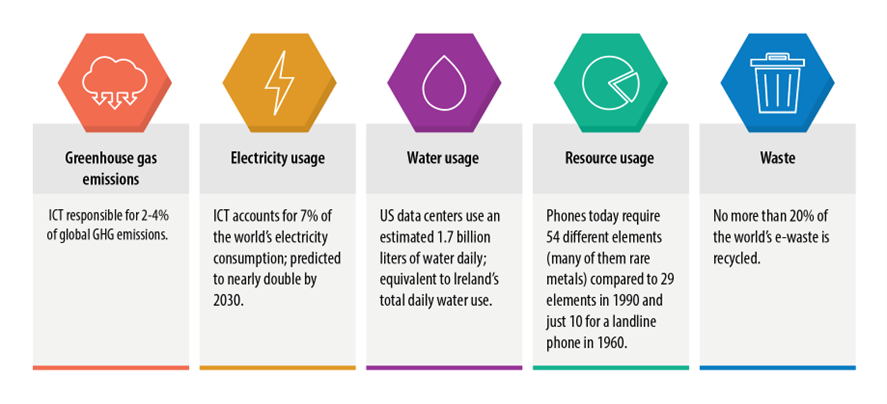
Companies must address the exponential growth of internet of things devices and the amount of data that is created, transferred, analyzed, and stored. The volume of data created worldwide is projected to increase by 50% in just the next two years. At the same time, training a generative AI model can emit as much GHGs as 123 gasoline vehicles driven for a year. Generative AI is also being integrated into search engines and could produce between four and five times as much CO2 as a traditional search.
Simultaneously, companies will need a more sophisticated accounting of their emissions to include the full lifecycle of their equipment, rather than just operations.
Most organizations will need to either adopt green IT principles or update their previous understanding of green IT in order to meet all their sustainability commitments. This is particularly true of industries in which their IT stack is a significant contributor to their emissions, such as in financial services, communications, insurance, and professional services. The pressure is also heightened for some nations, depending on their technological maturity, economic incentives, emissions-free electricity production, and other factors. For example, data centers consume about 18% of the electricity used in the Republic of Ireland.
A pivot to green IT is feasible for all companies and possible with existing technologies. However, there are several barriers that keep organizations from advancing, not all of which require a technology solution (Figure 1). The most significant hurdles are:
- Knowledge gap — There is a lack of awareness of green IT, understanding of what these principles require, or expertise to execute the organization’s strategy.
- High cost — There is an often-false perception that a more sustainable IT infrastructure is too expensive. Infosys research found that budget and return on investment were significant hurdles to starting new ESG initiatives.
- Lack of incentives — Companies don’t always have a full understanding of the cost and benefits of green IT. In those cases, inertia wins the day.
- Regulatory barriers — Many companies have found that the cloud allows them to better align their computing usage with capacity. And increasingly, cloud service providers are adding options that use renewable energy. However, some government data security regulations can limit a company’s opportunities.
- New technology — More electricity-intensive technologies, such as large language AI models, generate tons of emissions to train and pose an important challenge to companies and their environmental goals. Solutions such as tiny AI and federated learning are likely needed to offset some of these impacts.
Organizations will need a new roadmap if they intend to take advantage of new technologies without significant tradeoffs, such as missing publicly stated sustainability goals or sacrificing the bottom line.
Research suggests that companies are confident that sustainability and advanced technologies can coexist or even support each other. A 2022 Forrester survey found that companies with advanced IT maturity were more likely to say that improving environmental sustainability efforts was a high or critical priority.
The framework for greener IT
Businesses have been able to reduce their IT emissions over the past decade plus simply by relying on overall energy efficiency advances. Emissions have remained roughly flat while the amount of used and transferred data has grown exponentially. New microchip designs, device storage, and better data transfer networks have kept energy growth under control. Moore’s Law ensured that performance and energy usage were asynchronous.
Even now, growth in the creation of data and the computing power needed to manage it continues unabated. And the reality is that it will take more than new telecommunications networks and more densely packed transistors, which are already pushing against physical limits.
At worst, CIOs will be expected to hold the line against emissions increases. More likely, they will need to reduce their contributions at a similar pace to other departments. This will require a more rigorous and holistic approach to the concept of green IT — one that includes both technology solutions and change management. A well-thought-out framework can help companies work through their priorities, locate barriers, and identify solutions (Figure 2).
Figure 2. Infosys Green IT Framework
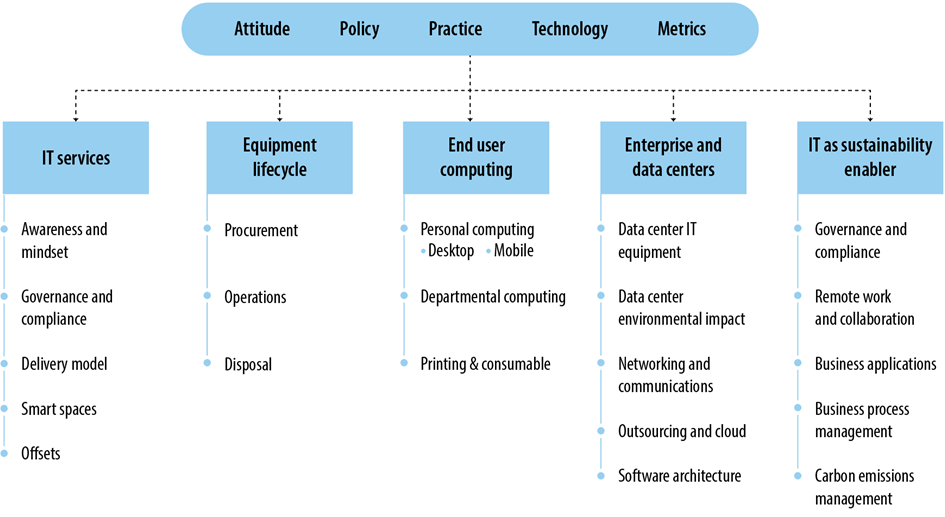
Six broad, often-interrelated areas that help companies better understand how to successfully incorporate green IT into their planning and operations are
- IT services — Create simple services that help preserve older computer equipment, rather than accelerating the trend toward hardware obsolescence. It is important to put most of your efforts into designing IT services with only the functionalities that are needed. New features can be rolled out later as required.
- Equipment lifecycle — End-user computing accounts for half of all GHG emissions in IT. So, it is critical to rethink how companies design IT hardware and make it last as long as possible.
- End-use computing — End users need to understand the environmental impact of the services and equipment they use. Green IT demands sustainable design principles on the supply side and awareness of their individual impact on the demand side.
- Enterprise and data centers — Track your data center efficiency through energy KPI such as power usage effectiveness.
- Software architecture — Developers can improve software efficiency by optimizing calculations or removing nonessential features. Simpler software allows hardware to last longer.
- IT as a sustainability enabler — Digitalization can offer an opportunity to improve our environmental footprint by reducing travel (remote working), rationalizing agriculture (smart farming), or optimizing energy consumption (smart grids). But keep in mind that some digital optimizations require limited resources, so digital technologies are not always the best solutions.
The data gathered from each area can allow companies to set priorities in ways that are the most cost effective while also meeting sustainability goals. In a Gartner survey, cost savings was a top three benefit of sustainability efforts, with decreased energy consumption as the number one priority.
Often, businesses have limited awareness of their organization’s carbon footprint and all the nearly invisible elements that contribute. Academic researchers in the US examined the environmental impact of the video meetings that proliferated during the Covid pandemic. The carbon footprint of a one-hour videoconference varies widely but can be the equivalent of burning as much as one-tenth of a gallon of gasoline. It’s a small individual impact that adds up when calculated for an entire organization. However, turning off the video — when feasible — can reduce the carbon footprint by 96%, according to researchers from Purdue University, Yale University, and the Massachusetts Institute of Technology.
IT as a sustainability enabler
Green IT is critical to almost every company’s environmental compliance efforts, no matter if the demands come from the board, regulators, or investors. The benefits, however, do not need to stop at mere compliance.
Like virtually all digital initiatives, green IT principles can lead to tangible financial benefits through innovation and a better understanding of an organization’s data. Companies that invest in green IT will discover ways to improve efficiency (lower costs) and differentiate themselves from competitors (increase revenue).
For some executives, a modern green IT strategy requires a mindset change (Figure 3). The figure below illustrates a limited — but still valuable approach — to green IT, compared to a broader, more business-focused attitude.
Figure 3. Sustainable IT vs. IT for sustainability
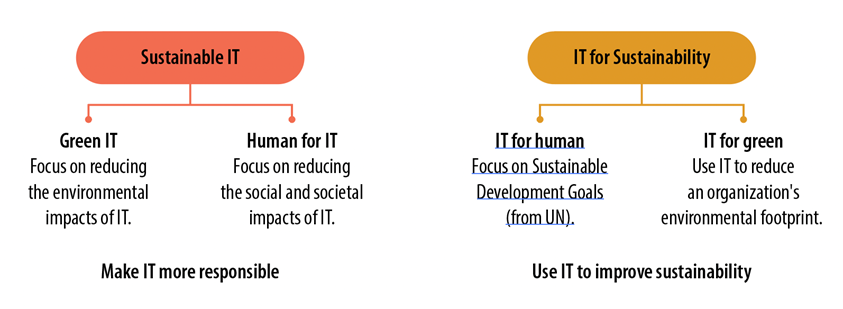
While organizations tend to lean towards digital solutions and enterprise technologies to solve their sustainability issues, it’s worth remembering that these solutions are in fact also part of the problem. GHG emissions from digital technologies are projected to account for 5.5% to 9% of the global total, unless swift action is taken. At the same time, research suggest that digital technology could reduce emissions by 15%.
Much like the physical environment, IT is at a tipping point. The accelerated adoption of renewable energy is a key element to a future that respects planetary boundaries. However, that is not the lone solution. It is now time for enterprises to adopt efficient accounting frameworks, such as choosing the right KPIs, and become part of the solution towards a more sustainable world.
Authors
- Stéphane Marie - Principal Consultant, Sustainability Practice, Infosys
- Jeff Mosier - Senior Consultant, Infosys Knowledge Institute
- Mathieu Bouby - Consultant, Sustainability Practice, Infosys
Originally published at Green IT: From Back Office to the Front Row (infosys.com)












